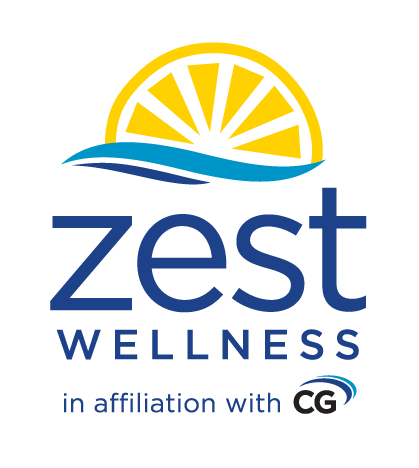I'm Pregnant, Now What? 10 Essential Steps for a Healthy Start
Finding out you’re pregnant is a life-changing moment, often bringing a mix of emotions—excitement, joy, surprise, and even uncertainty. The first trimester can feel overwhelming, but taking mindful steps can support both your health and your baby’s development. We’re here to help you navigate this journey with confidence.
Pregnancy is a marathon, not a sprint, and the best way to begin is with small, intentional steps. Thankfully, CG Zest Wellness’ newest program, Project Motherhood is here to simplify this process and empower you.
Here’s a 10-step guide to help you move forward:
1. Schedule Your First Prenatal Visit
After a positive home pregnancy test, schedule your first prenatal appointment with your family doctor, obstetrician, or midwife around 6-8 weeks. Your provider will confirm the pregnancy, estimate your due date, perform tests, and begin monitoring both your health and your baby’s development. Early prenatal care helps screen for potential complications and ensures a healthy start.
Choosing a healthcare provider is a personal decision. While recommendations and online searches can help, it’s important to find a provider you feel comfortable with. Don’t hesitate to explore your options and advocate for your birth preferences.
2. Start Taking Prenatal Vitamins
If you haven’t already, start taking prenatal vitamins, especially folic acid. You should aim for 600 micrograms (mcg) of folic acid daily to support your baby’s organ development and reduce the risk of neural tube defects. Other essential nutrients include:
Iron (~27mg) for red blood cell production
Vitamin D (~400-600 IU) for bone health
Omega-3s (250mg DHA + EPA) for brain and eye development
3. Adjust Your Diet for Pregnancy
Your baby depends on you for nourishment, so focus on a balanced diet rich in:
Fruits and vegetables
Whole grains
Lean proteins
Healthy fats
Foods to avoid:
Undercooked meat and raw fish (high risk of bacteria and parasites)
Unpasteurized dairy and soft cheeses
High-mercury fish (swordfish, tuna)
Excess caffeine (limit to 200 mg per day)
Staying hydrated and eating small, frequent meals can also help manage nausea.
4. Avoid Harmful Substances
Avoid smoking, alcohol, and other harmful substances, as they increase the risk of:
Premature birth
Stillbirth
Fetal alcohol syndrome
Miscarriage
If you need help quitting, talk to your healthcare provider for support and resources.
5. Get to Know Your Body’s Changes
Your body will undergo significant changes during pregnancy, including:
Fatigue
Mood swings
Tender breasts
Frequent urination
These symptoms are normal, but if anything feels unusual, check in with your healthcare provider. Pregnancy can also bring emotional ups and downs, so build a support network early on—family, friends, or a maternity community like Project Motherhood can be invaluable.
6. Manage Morning Sickness
Morning sickness can strike at any time of day. To help manage it:
Try ginger (tea, candies, or capsules)
Eat small, frequent meals
Stay hydrated
If nausea is severe and you can’t keep food down, consult your doctor.
7. Stay Active (with Caution)
Exercise during pregnancy can boost your mood, improve circulation, and prepare your body for labor. If you’re unsure about which workouts are safe, check with your doctor first.
You can also connect with our prenatal experts to create a safe and effective fitness routine tailored to you.
8. Review Your Insurance & Maternity Leave
Now is the time to review your health insurance to understand:
Coverage for prenatal care, delivery, and postpartum services
Co-pays and out-of-pocket costs
Check your maternity leave policy at work so you can plan ahead. Many private facilities provide a breakdown of prenatal and delivery costs, including deposits. Be sure to ask about fees upfront and explore alternative options if needed.
9. Decide When to Share Your News
Deciding when to announce your pregnancy is a personal choice. Some wait until after the first trimester (when the risk of miscarriage decreases), while others share earlier.
Whenever you decide, ensure it feels right for you and your partner. Sharing the news can offer emotional support and give your loved ones a chance to celebrate with you.
10. Stay Informed, But Avoid Overwhelm
There is a lot of information available on pregnancy, but too much can feel overwhelming. Stick to trusted sources, such as:
Your healthcare provider
Reputable websites
Project Motherhood’s podcasts, blogs, and community groups
Trust your instincts and take things one step at a time.
Pregnancy is a unique and transformative journey. While the first trimester can feel overwhelming, taking small, intentional steps will set you up for a healthy and empowered experience. Our newest program, Project Motherhood is here to support you every step of the way!
Project Motherhood is now launched in Cayman. this program supports expecting and new mothers through every stage of their journey. Participants will benefit from an inclusive, supportive experience, featuring access to a community of professionals, an ongoing newsletter, and exclusive maternity and postpartum perks.
Learn more about Project Motherhood by visiting our website and stay tuned for its release in other jurisdictions.
References
Tunçalp, Ӧ., Pena-Rosas, J. P., Lawrie, T., Bucagu, M., Oladapo, O. T., Portela, A., & Gülmezoglu, A. M. (2017). WHO recommendations on antenatal care for a positive pregnancy experience going beyond survival. Bjog, 124(6), 860-862.
Cook, Jocelynn L., et al. "Epidemiology and effects of substance use in pregnancy." Journal of Obstetrics and Gynaecology Canada 39.10 (2017): 906-915.






